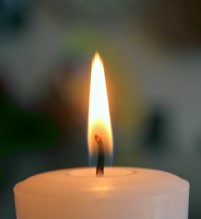One part of what makes hot things a certain color is just how hot they are. You can see this when you look at the wires in a toaster glowing from dull red to bright orange as they heat up. You can see the color of an incandescent light change as you move a dimmer switch from low to high. The dull orange of the lowest setting becomes the white hot of the highest setting.
In a flame from burning gas or alcohol, there are often two main colors, orange and blue, which are produced through different mechanisms. The orange comes from particles of unburned soot that are glowing from the heat. Their color is determined by the temperature in what is called blackbody radiation. Red is the coolest flame, then orange, yellow, white, and finally blue.
Blue color would indicate a temperature of over 10,000 degrees if the sooty part of the flame were that color. The blue part of the flame we normally see gets its color from a different mechanism. Electrons in atoms and molecules can be excited into higher energy levels as the gas or alcohol burns. These electrons can emit that energy as light when they fall back down to their normal energy levels. The color of light they emit tells us what molecules they are, since each molecule has a different energy levels. The blue comes mainly from a molecule made from one carbon atom bonded to one hydrogen atom. Some of the light in the greenish-blue portion of the flame comes from a molecule made of two carbon atoms.
